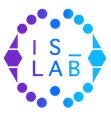VisioRed is a visualisation tool for assisting the user to understand a predictive maintenance model’s prediction, by incorporating a set of modifications, recommendations, forecasters and interpretability options, as well as some additional functionalities towards prescriptive maintenance. VisioRed is available on GitHub and DockerHub.





